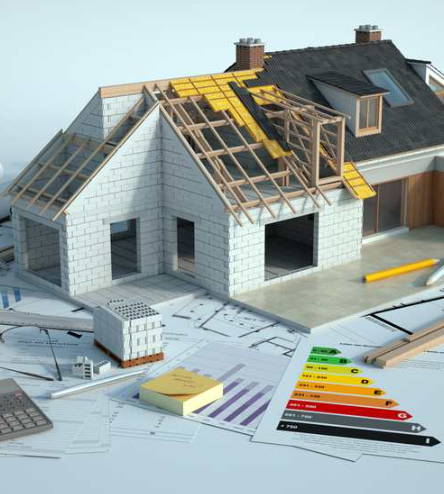If you’re involved in construction work in the UK, VAT Notice 708 could help reduce the VAT rate on your projects, potentially saving you a significant amount of money. This guide explains what VAT Notice 708 is, when it applies, and how to take advantage of reduced or zero VAT rates in the construction sector.
What is VAT?
Value Added Tax (VAT) is a consumption tax applied to most goods and services in the UK. The standard VAT rate is 20%, but there are reduced rates and zero-rated categories for certain items and services. VAT applies to most business transactions, and businesses must register for VAT if their taxable turnover exceeds £90,000. For construction, some services and supplies qualify for a reduced VAT rate or even a zero-rate under VAT Notice 708.
Zero-rated items include certain goods like children’s clothing, books, newspapers, and items exported from the UK. For construction, zero-rated VAT applies to specific building services and materials, reducing the financial burden on property owners who are not VAT-registered.
What is VAT Notice 708?
VAT Notice 708 outlines the rules for applying reduced (5%) and zero VAT rates to certain construction-related services and materials. This is particularly beneficial for non-VAT registered property owners who cannot claim input tax. By using VAT Notice 708, construction costs can be reduced, offering substantial savings—up to 20%—on specific qualifying services.
For contractors and developers, the zero or reduced VAT rate can significantly cut the costs of building, renovation, and repair. Whether you’re renovating a home or undertaking a large commercial conversion, understanding how VAT Notice 708 works can help ensure your project qualifies for the best VAT rate.
When Does VAT Notice 708 Apply?
VAT Notice 708 applies to a variety of construction services and materials that qualify for zero or reduced VAT rates. These include renovations, conversions, repairs, and new builds, particularly those involving residential properties. Key examples of qualifying construction materials are those typically built into a property, such as plumbing, heating systems, flooring, doors, windows, and kitchen or bathroom fittings.
However, there are specific criteria for these rates to apply, and it’s important to verify whether your construction project qualifies. Zero-rated VAT applies when the building is used for residential purposes, charitable use, or other relevant categories, such as elderly care homes, places of worship, or village halls.
The reduced VAT rate of 5% may apply to certain types of renovation, alterations to unoccupied residential properties, and specific energy-saving materials or mobility aids installations.
Qualifying Construction Services and Projects
There are specific construction services and projects that qualify for the reduced or zero VAT rate under VAT Notice 708. These include:
- Renovations of homes that have been unoccupied for over two years.
- Converting non-residential properties into residential homes (e.g., barns into homes).
- Converting single homes into multiple residential units (e.g., houses into bedsits).
- First-time installations for electricity and gas connections.
Zero-Rated VAT Construction Works:
- New residential dwellings and communal buildings.
- Charitable buildings, such as housing for charities.
- Non-residential buildings converted into communal living spaces or qualifying dwellings.
- Installations for people with disabilities.
Reduced-Rated (5%) Construction Works:
- Renovations of vacant residential properties.
- Installations for the elderly, such as mobility aids.
- Grant-funded heating or hot water installations, energy-saving materials, and qualifying security products.
VAT Notice 708 Exemptions
While VAT Notice 708 provides relief for many construction projects, some materials and services do not qualify for the reduced or zero rates. Exemptions include:
- Non-building materials, like dishwashers, fridges, and electrical components for gates or garage doors.
- Professional services, such as architectural consultancy, surveying, and project management.
- Items like carpets, curtains, and other furnishings.
- Some external structures, such as garden sheds, stables, and detached swimming pools, which are not eligible for reduced VAT rates.
Additionally, property owners who choose to manage their own construction work without registering as a development company may not qualify for reduced VAT rates.
Compliance and VAT Tips
For those working with VAT Notice 708, maintaining accurate records and ensuring compliance is crucial. Here are some helpful tips:
- Ensure Eligibility: Verify that your construction project meets the criteria for reduced or zero VAT rates.
- Obtain Certificates: Before making transactions, make sure you have the necessary certificates to apply the correct VAT rate.
- Track Records: Keep detailed records of your business transactions, including invoices, payments, and certificates. This is essential for accurate VAT returns.
- Stay Updated with Making Tax Digital (MTD): HMRC’s Making Tax Digital initiative, which will become mandatory by 2026, requires digital record-keeping for VAT-registered businesses.
- Reclaim VAT on DIY Projects: If you’ve undertaken construction work yourself, you may be able to reclaim VAT on your renovations or new builds through the DIY Housebuilders Scheme.
Lastly, ensure that your VAT certificates are accurate, as incorrect rates may result in penalties based on the uncharged VAT amount.
Conclusion
VAT Notice 708 offers significant savings for qualifying construction projects by reducing or eliminating VAT on materials and services. If you are a property owner, contractor, or developer involved in residential or charitable construction, understanding the criteria and working with tax experts can help you take full advantage of these reduced rates. Ensure your project qualifies, maintain proper records, and stay on top of deadlines to avoid penalties. By following the guidelines outlined in this notice, you can save money on construction costs while ensuring compliance with VAT regulations.



